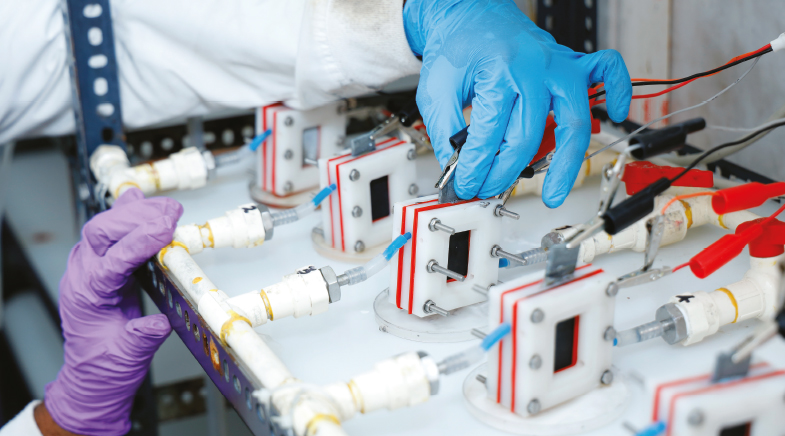A trick in the wall
-
- from Shaastra :: vol 04 issue 07 :: Aug 2025

The discovery of an enzyme used in bacterial cell wall synthesis may lead to new drugs.
Manjula Reddy and her team at the Hyderabad-based Centre for Cellular & Molecular Biology (CCMB), a constituent laboratory of the Council of Scientific & Industrial Research, have for long been studying the biological processes involved in the synthesis and degradation of bacterial cell walls. Bacteria, unicellular organisms, divide frequently to give rise to daughter cells. For this to happen, the bacterial cell wall should remodel, grow and divide. For years, Reddy, a bacterial geneticist, has been successfully identifying, isolating and characterising enzymes involved in breaking down the bacterial cell walls, which eventually leads to new growth.
Recently, Reddy and her colleagues discovered an unknown enzyme that helps keep the integrity of the bacterial cell wall. The bacterial cell wall, also called the peptidoglycan, protects the cell from internal pressure and the external environment, and provides a distinct shape to bacteria. The CCMB scientists published the work in a recent issue of Proceedings of the National Academy of Sciences (bit.ly/PgeF-Reddy). "Errors are inherently made during bacterial cell wall synthesis, and a proofreading enzyme is required to correct these errors, a phenomenon which was not previously known," says Shambhavi Garde, a postdoctoral fellow at Reddy's lab and the first author of the PNAS paper.
The wall is made of strands of simple sugars (glycan) cross-linked by short peptides of a certain fixed amino acid composition. These peptides in the bacterial cell wall are not synthesised through the normal process of protein synthesis, where the process of ribosomes (like DNA) translates genetic information into proteins. Instead, these peptides are synthesised in a unique non-ribosomal manner, wherein each enzyme adds one amino acid at a time, Garde says.
For example, amino acid L-Alanine is usually the first amino acid added in most bacteria during bacterial cell wall synthesis. But more often than not, similar amino acids such as L-Serine or glycine are erroneously added in place of L-Alanine. The CCMB team found that in such a situation, a proofreading enzyme called PgeF (Peptidoglycan editing factor) gets into action. PgeF is exclusively conserved in bacteria and vertebrates, even though it is absent in plants and archaea. The enzyme breaks these amino acids down by chemically reacting with them so that they don't get incorporated into the cell wall, she explains.
It was also a revelation for the scientists that errors occur during the process of bacterial cell wall synthesis. "Such errors are bad for the bacteria because they make the microorganisms hyper-sensitive to commonly used antibiotics such as beta-lactam," says Garde.
The team had earlier found that the bacterium Escherichia coli — which they used as a model organism — became susceptible to beta-lactam, even though they were not sure of the mechanisms involved. "In the absence of PgeF, excess erroneous amino acids accumulate in the cell wall and make it highly vulnerable to cell-wall-targeting drugs," Garde says.
PAST ISSUES - Free to Read


Have a
story idea?
Tell us.
Do you have a recent research paper or an idea for a science/technology-themed article that you'd like to tell us about?
GET IN TOUCH














